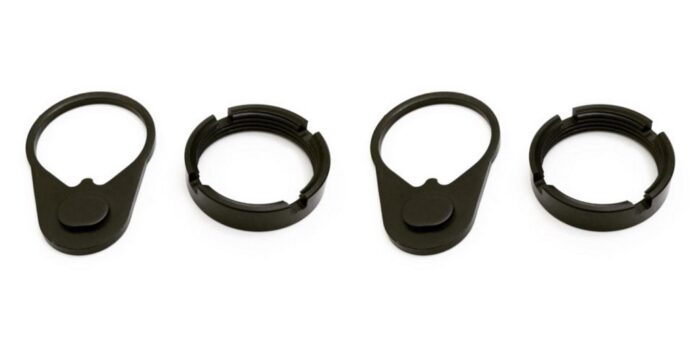A gas gun, like an AR’s, buffer tube and accessories just might be the least understood portion of the rifle’s recoil system that enables the action to cycle.
Let’s break it down and lay out the fundamentals.
What Is the Function of the Buffer Tube, Weights, and Springs?
When you fire your AR, gases expand in the chamber and propel the bullet forward. When the gases expand to the point that the bullet passes the gas port, some of the gases siphon through the gas block, travel through the gas tube, into the bolt carrier group through the gas key, and enter the gas cylinder.
They expand in the gas cylinder, forcing the bolt carrier group rearward.
As the bolt carrier moves rearward, it pushes back against the buffer tube’s weights, which help to absorb some of the potential energy.
The bolt carrier group continues rearward, forcing itself back against both the buffer weights and buffer spring.
As the bolt carrier group continues to move to the rear, the buffer spring absorbs and stores some of that energy.
When the bolt travels as far to the rear as possible, the buffer spring starts to return some of that energy, forcing the bolt carrier group back into battery and resetting the action.
This continues the action of cycling the rifle.
Where Does the Buffer Tube Attach?
The buffer tube and accessories attach to the lower receiver of an AR and the buffer tube itself serves as an attachment point for the butt stock.
About Buffer Tube Weights
There are several different standard buffer weight configurations for AR-style rifles.
These are carbine (3oz), H1 (3.8oz), H2 (4.6-4.7oz), rifle (5-5.2oz), H3 (5-5.4oz), and pistol (5-8.5oz).
The buffer weight helps to arrest the momentum of the bolt carrier group as it travels to the rear through the buffer tube.
One of the benefits of adding heavier buffer weights to your buffer tube is that it will increase the reciprocating mass of the rifle.
Heavier weights will slow down the cyclic rate slightly (assuming no other factors change) but they will also have a pronounced effect on felt recoil.
That is, heavier weights will cut felt recoil and lighter weights will increase it.
About Buffer Tube Springs
There are two main types of buffer springs for AR-style rifles, being rifle and carbine-style springs.
The spring is what stores the energy, resetting the action.
Some find that standard springs produce a loud noise/vibratory feedback during shooting, which can be distracting.
However, there are special braided buffer springs on the market, which serve as a harmonic damper and smooth out the cycling of the action.
Are There Other Things You Can Do to Improve Cycling or Affect Recoil?
While you can change out the buffer tube weights and springs to adjust felt recoil and improve cycling performance, these are not the only things you can do.
Adding a muzzle brake is a fairly easy way to modify your rifle to cut felt recoil.
Also, you can adjust the gas system. Most rifles are shipped from the factory slightly overgassed to ensure they cycle properly.
This however is harder on the gas system, the buffer spring, and the bolt carrier group, and produces more recoil.
Just be aware that tinkering with the gas system can cause cycling issues if you aren’t familiar with it. That is a job that might be best left for a gunsmith if you’ve never done it before.
Where Can You Get AR Buffer Tubes and Accessories
Looking for AR buffer tube accessories, such as mil-spec buffer tube kits for AR pistols or full-size platforms?
Visit MCS Gearup via the previous link. They carry a wide range of gun parts and accessories, including buffer tube accessories, muzzle devices, gas system components, barrels, and bolt carrier groups.


